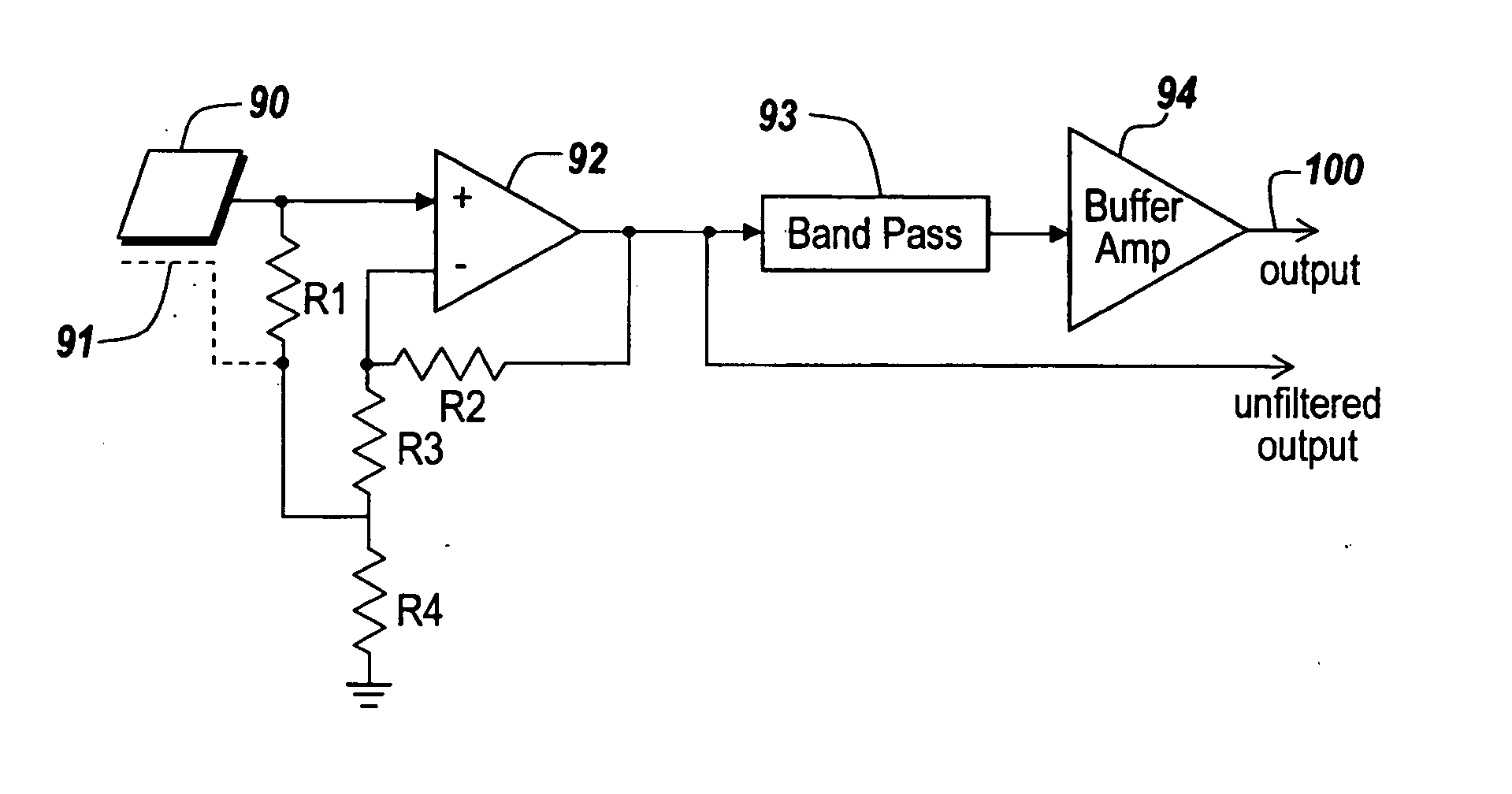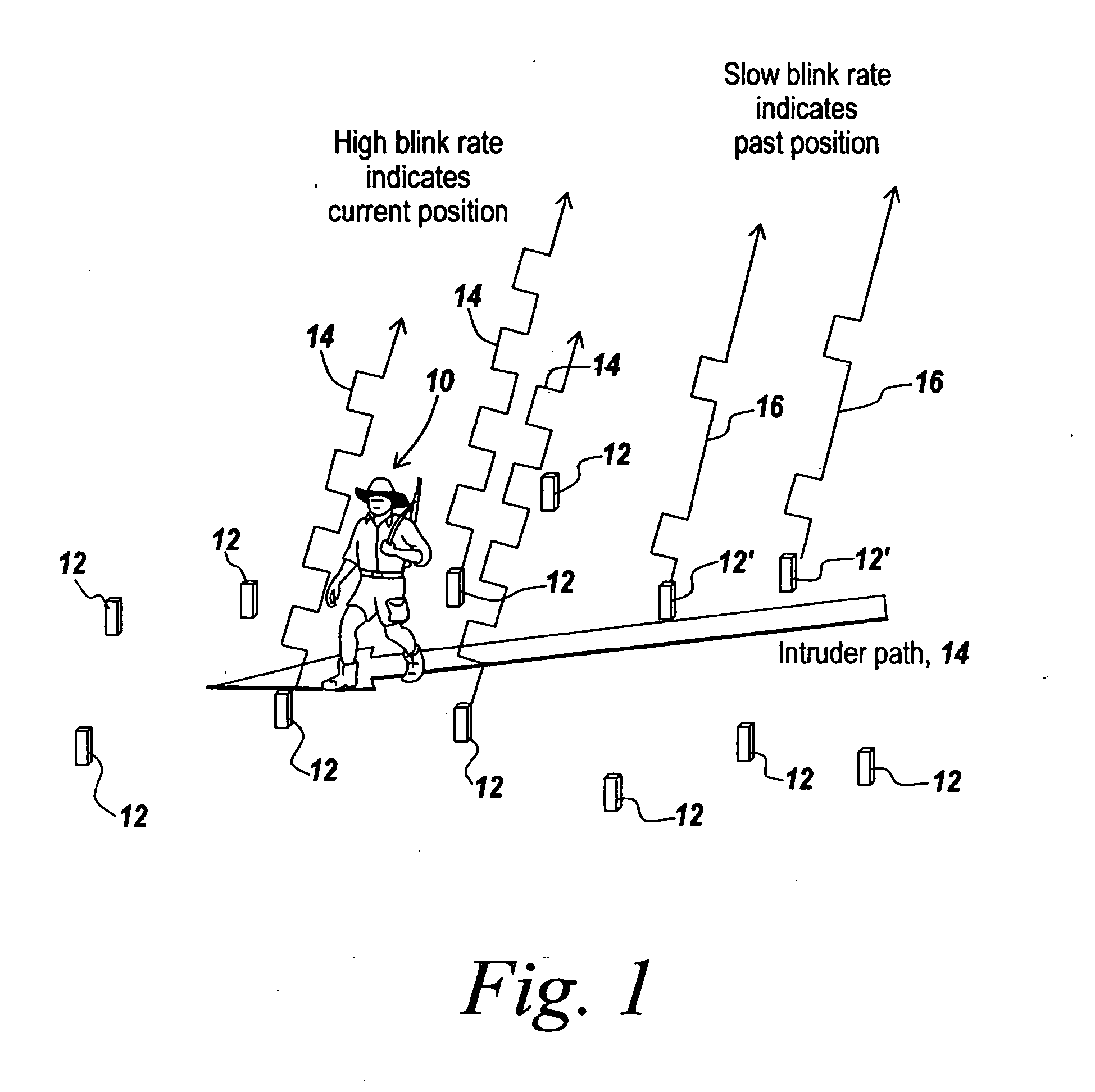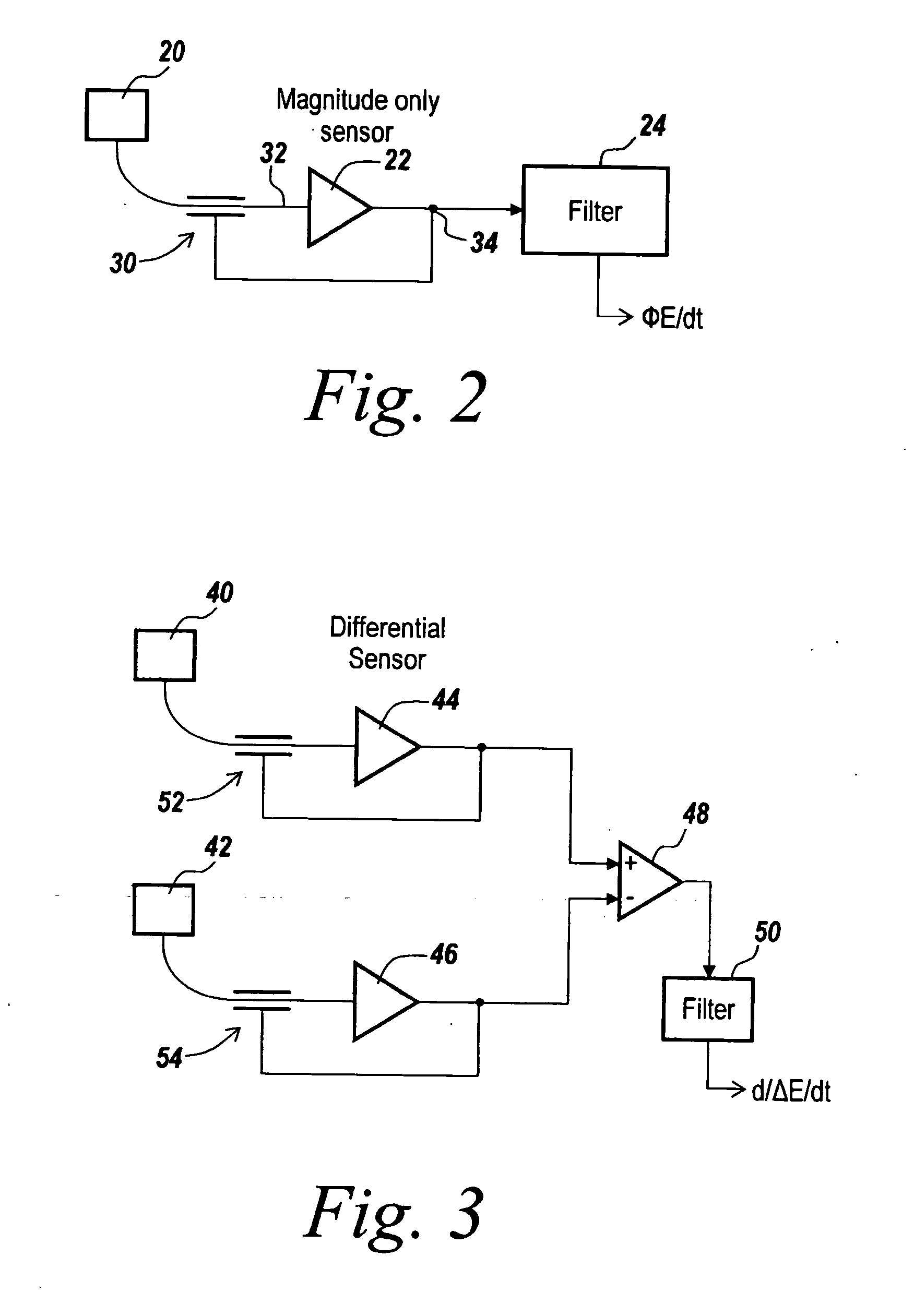Method and apparatus for detecting individuals using electrical field sensors
a technology of electrical field and individual detection, applied in the field of individual detection, can solve the problems of requiring a tremendous amount of bandwidth and a human, a mechanical sensor type with an extremely high false alarm rate, and a large amount of bandwidth. achieve the effect of reducing the stray capacitance and extremely high effective impedan
- Summary
- Abstract
- Description
- Claims
- Application Information
AI Technical Summary
Benefits of technology
Problems solved by technology
Method used
Image
Examples
Embodiment Construction
[0070] Referring now to FIG. 1, it is the purpose of the subject invention to be able to detect the presence of a moving individual 10 as he moves past E-field sensors 12 that are scattered about the terrain over which the individual walks or runs.
[0071] The general path of the individual, intruder path 14, is illustrated, which shows that the individual has moved past some of the sensors, is at some of the other sensors and is moving towards further sensors.
[0072] When the sensor detects an E-field tilt corresponding to the presence of an individual within a predetermined perimeter, the sensor emits in one embodiment a pulsed or blinked LED signal 14 to indicate the presence of the individual within a small distance from the sensor. As will be appreciated, these firefly blinking signals can be observed either from above or from ground level and indicate intrusion into the zone protected by the scattered sensors. It is noted that it is not necessary to know the location of the sca...
PUM
 Login to View More
Login to View More Abstract
Description
Claims
Application Information
 Login to View More
Login to View More - R&D
- Intellectual Property
- Life Sciences
- Materials
- Tech Scout
- Unparalleled Data Quality
- Higher Quality Content
- 60% Fewer Hallucinations
Browse by: Latest US Patents, China's latest patents, Technical Efficacy Thesaurus, Application Domain, Technology Topic, Popular Technical Reports.
© 2025 PatSnap. All rights reserved.Legal|Privacy policy|Modern Slavery Act Transparency Statement|Sitemap|About US| Contact US: help@patsnap.com



